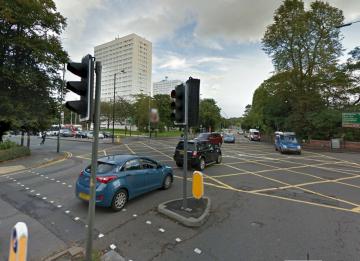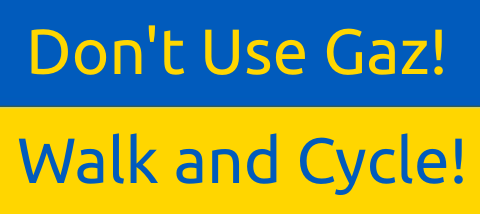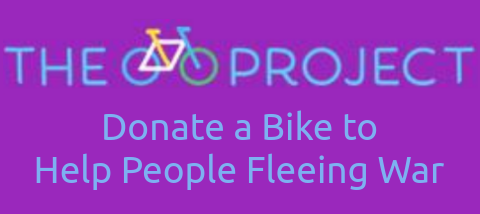
Last autumn, The Near Miss project looked at the daily experiences of cycle users, and the team have just published their first findings, which have been reported in the Guardian newspaper - that cycle users on average experience at least one incident classified as 'very scary' every week, and harassment by another road user once a month. The project is being led by Rachel Aldred, Senior Lecturer in Transport at Westminster University, who has extensive experience in researching cycling issues, and involved a sample of over 1,500 cycle users keep a diary of their daily experiences. This is a rigorous study, and one that we ought to pay close attention to.
That Britain's roads can often have an aggressive environment won't be news to anyone. What may be surprising is that this research finds that more close passes seemed to happen to people who were cycling at a lower reported average speed. There were 3 times more close passes reported at 8mph than at 12mph. So if you are fit and confident, riding a bike that is well maintained and have a good level of fitness, you would appear to experience a better road environment. As you travel faster, there will be fewer motor vehicles overtaking you in the same distance, and perhaps you will also be riding in primary position on the road, to further discourage unsafe overtaking. While MAMILs (middle-aged men in lycra) may be a popular target in the press and on social media, it appears that they are likely to have proportionally fewer bad experiences on the roads. Even faster riders, however, still experience near misses on British roads on a regular basis.
Part of the problem is that there is a minority of drivers on British roads who are aggressive, and who cause problems for other road users. The stories told by the participants include many examples of intentionally aggressive behaviour by drivers, such as tail-gating and bullying cycle users before managing to overtake, and revving engines and sounding horns to encourage cycle users to give way. While this sort of behaviour is more intimidating for cycle users without the protection of a metal cage, many people who do not cycle would have sympathy with a crackdown on this type of behaviour, as it causes problems for most road users. Enforcing better behaviour through tougher policing would bring benefits for most people.
This, however, I do not feel would solve the problem. Many close passes are not the result of malice, but the result of either mis-judgement or a mistake. At the junction of Priory Road and Pershore Road I experienced a close pass that forced me to hit the brakes before I was squeezed between the kerb and the car and knocked off. When I caught up with the car at the Bristol Road / Priory Road junction, and explained to the driver how scared I had been, she was very apologetic. It was not malice that had almost taken me under her wheels, but lack of thought.  But this is not simply a problem for drivers in the UK. When Push Bikes members went on David Hembrow's study tour in the Netherlands in June 2014, we rode on a new cycle lane (see picture) which had been so poorly designed that many of the motor vehicles were driving across the lane as they turned the corner. Directly in front of me, a white van cut across the whole cycle lane, making me feel like I was back home in the UK, and worrying if the cars behind me would cut the corner as well. Clearly Dutch drivers make many of the same mistakes that British drivers do, but as the road infrastructure designs out most of the conflict points, the experience for cycle users is much better.
But this is not simply a problem for drivers in the UK. When Push Bikes members went on David Hembrow's study tour in the Netherlands in June 2014, we rode on a new cycle lane (see picture) which had been so poorly designed that many of the motor vehicles were driving across the lane as they turned the corner. Directly in front of me, a white van cut across the whole cycle lane, making me feel like I was back home in the UK, and worrying if the cars behind me would cut the corner as well. Clearly Dutch drivers make many of the same mistakes that British drivers do, but as the road infrastructure designs out most of the conflict points, the experience for cycle users is much better.
The cycle users in the Near Miss project reported feeling helpless, unable to do anything to improve their situation other than remain constantly vigilant and hope to hit the brakes or swerve to the side at just the right time. With close passes and tailgating, which made up a third of the incidents, cycle users are unable to see what is going on behind them, further increasing the sense of powerlessness. It is this subjective fear, not the objective reality of the safety of cycling, that puts off many potential cycle users. The terror of a HGV passing inches from your elbow is more visceral and motivating than reading statistics showing that you may experience only 1 road traffic collision in 20 years of cycling.
To achieve mass cycling in the UK, it is essential to deliver road conditions that do not feel uncontrollable dangerous. This means taming minor roads by cutting through traffic and properly enforcing 20 mph speed limits, and providing protected space for cycling on main roads and at junctions.
close pass groningen.jpg

Near Miss in Haren



